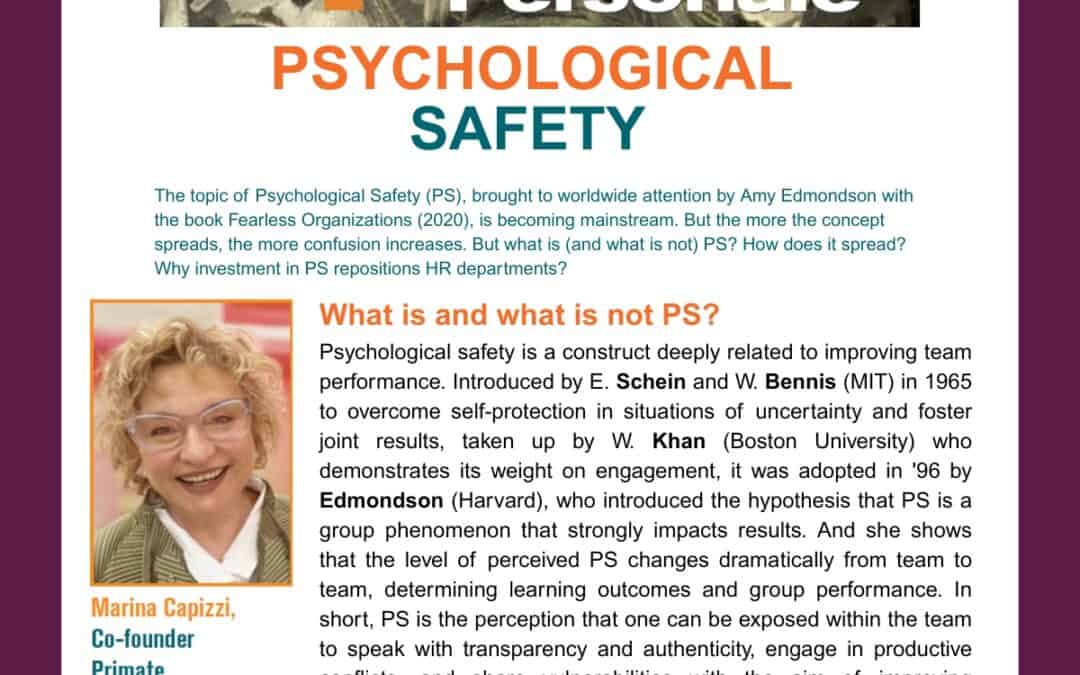This is the English translation of the article published on “Direzione del Personale” (March 2025)
The topic of Psychological Safety (PS), brought to worldwide attention by Amy Edmondson with the book Fearless Organizations (2020), is becoming mainstream. But the more the concept spreads, the more confusion increases. But what is (and what is not) PS? How does it spread? Why investment in PS repositions HR departments?
What is and what is not PS?
Psychological safety is a construct deeply related to improving team performance. Introduced by E. Schein and W. Bennis (MIT) in 1965 to overcome self-protection in situations of uncertainty and foster joint results, taken up by W. Khan (Boston University) who demonstrates its weight on engagement, it was adopted in ’96 by Edmondson (Harvard), who introduced the hypothesis that PS is a group phenomenon that strongly impacts results. And she shows that the level of perceived PS changes dramatically from team to team, determining learning outcomes and group performance. In short, PS is the perception that one can be exposed within the team to speak with transparency and authenticity, engage in productive conflicts, and share vulnerabilities with the aim of improving collective performance. That is: expressing one’s ideas, doubts and disagreements, asking questions and proposals, asking for help, sharing mistakes… How many people in your company this week did not say “I didn’t understand,” “I was wrong,” “I don’t agree”? Now it becomes easier to understand what psychological safety is not. It is not a personality trait, it is not consensus, absence of evaluation, being in tune or lowering the standard of performance. It is not a different way of calling confidence. It is not psychological well-being that, without the constant challenge of performance, creates comfort zones, the opposite of PS. PS is the precondition for increasing well-being and transforming negative stress into healthy tension.
How do you spread PS?
If PS is a product of the team and has to do with culture, spreading it requires working with real teams (including managers) and redesigning the culture. Educational actions to raise awareness among the corporate population, managerial and otherwise, are welcome. But if we are looking for a true evolutionary leap, we need to help people working together to talk and listen to each other in a transparent and authentic way, and to experiment with practices and small gestures that evolve the culture on a day-to-day basis. HR departments typically work on corporate populations, not real teams. Usually, it is top management that identifies new values and then spreads them through cascading programs. Here, the logic of intervention needs to change.
Why is investing on PS strategic and repositioning HR Departments?
Investing on a precondition may seem too little. PS is the soil, not the seed. We all do training on listening and feedback, collaboration and trust, team management, motivation, empowerment, delegation and employee development, proactivity and initiative, stress management and well-being, innovation, continuous improvement, self-development… PS is strategic because it prepares the soil for these seeds to take root. By investing in PS, HR departments have the opportunity to play a leading role in creating the enabling condition for superior performance, positioning themselves as strategic partners in transformation.
By Marina Capizzi, author of Hierarchy to Die or to Thrive?
